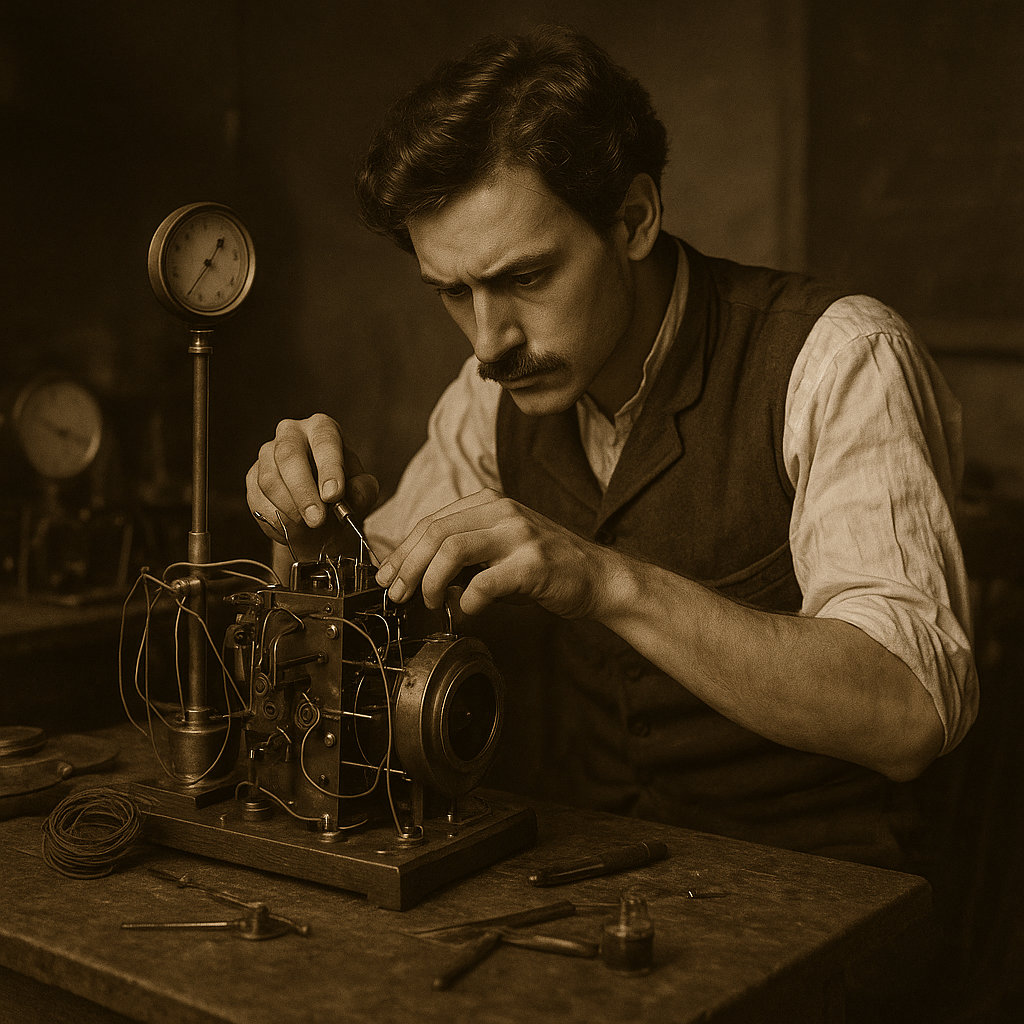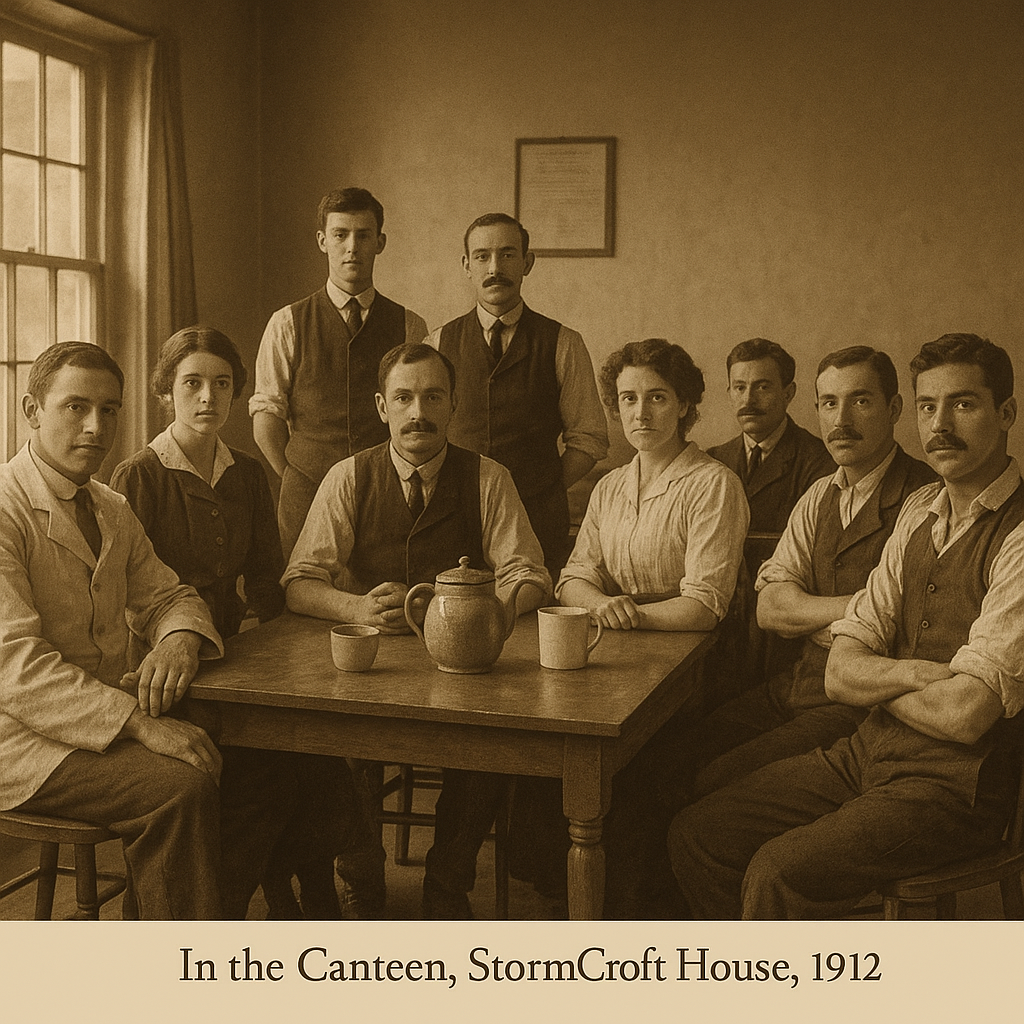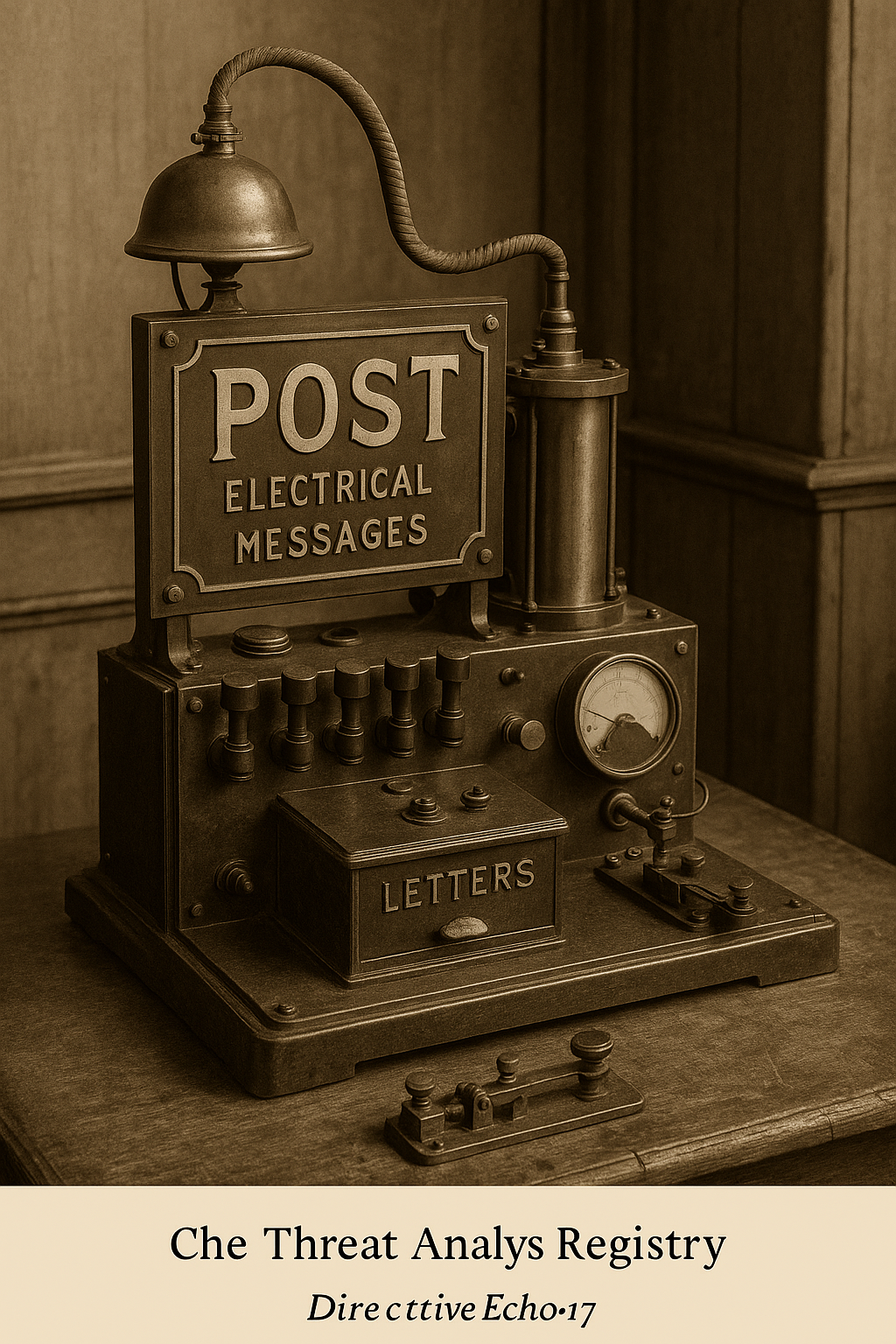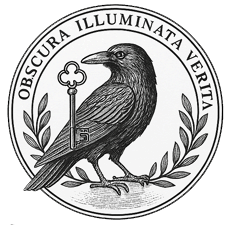
A sepia-toned photograph capturing a rare glimpse inside one of StormCroft House’s lesser-known sub-laboratories.
StormCroft is not a house. It is not a lab. It is not a myth.
It is the memory of all three — left to rot in the fog of Dartmoor, yet never quite forgotten.
StormCroft began as a creative archive and speculative history project, assembling fictionalised documents, faded photographs, obscure timelines, and unreliable narrators into a singular immersive universe. Set between 1865 and 1984, the StormCroft timeline spans the rise and fall of a secretive scientific retreat hidden on the edge of Dartmoor, Devon — a place where the laws of memory, time, and emotion were tested, bent, and often broken.
Founded in 1870 by a group known as The StormCroft Initiative — physicist Lydia Stormcroft, engineer Octavius Wren, neuro-researcher Abram Finch, and temporal specialist Wilber R. Dart — the house quickly evolved beyond its architectural boundaries. Designed to isolate ideas and observe human experience under rare atmospheric conditions, StormCroft operated outside ordinary society, employing servants, porters, technicians, and “sensitive types” in tightly choreographed roles.
It was a home for invention, a testing ground for impossibility, and increasingly, a sanctuary for those with no place else to go.
(image detail: The unnamed figure — believed to be either Merritt Vale or a junior apprentice working under Finch — is seen hunched in focused concentration over a complex network of exposed copper wiring and resonance bulbs. The ambient blur around the figure was long thought to be a photographic fault, though StormCroft’s own notes refer to it as a “loop halo.”
Shelves around the workspace contain sealed documents, unidentified fluids, and a suspended tuning fork. This image was retrieved from a lead-lined envelope marked “Do Not Develop in Daylight.”)
What This Project Contains

Captured in the early months of 1912, this rare sepia-toned photograph shows nine members of StormCroft House gathered in the staff canteen during a rare moment of relaxation. The photograph, staged but informally posed, was taken by junior assistant Isaac Wren using a fixed-lens clock camera trialled for internal surveillance.
StormCroft.com (and its connected materials) offer a curated look inside a fictional world constructed from:
-
Fabricated primary documents (interviews, internal reports, diary fragments)
-
Historically styled imagery (sepia-toned portraits, surveillance plates, and recovered diagrams)
-
Biographies of household figures and servants — many of whom were involved in strange, intimate, or inexplicable events
-
Timelines and Archives divided into thematic eras:
-
Origins (1865–1889)
-
The Expansion Era (1890–1923)
-
The Quietening (1924–1957)
-
The Final Devices (1958–1984)
-
-
Secret tunnels linked to the Princetown & Dartmoor Railway
-
Theories and speculation surrounding “The Listening Floor,” the “Croft Loop Dial,” and The Bell Room
You’ll find echoes of historical events such as the Cleveland Street scandal woven into this world, refracted through fiction to explore how power, secrecy, and forbidden knowledge might distort institutions — and people.
(in the image: From left to right:
- Jonas Pelham – Maintenance Porter, often assigned to furnace corridor duties. Known for his whistling and habit of oiling boots twice daily.
- Amal Singh – Archive Scribe (Junior), soft-spoken, recorded to have memorised over 300 inventory glyphs by age 20.
- Florence Ley – Domestic Cook, also believed to have been a skilled herbalist; connected to early Quietening preparations.
- Robert “Rook” Mallory – Bell Chamber Sweep. His uniform always bore a copper brooch, origin unknown.
- Dr. Helen Marridge – Communications Wing Specialist, post-CroftNet era figure. Her presence in this 1912 image is still unexplained.
- Ernest Dal – Upper-Hall Porter. Kept a logbook of every door opened between 1910 and 1913.
Victor Hales – Nephew of former Kitchen Porter Jonathan Hales. Took post in 1911 as Pantry Assistant. - Thomas Finch – Nephew of Dr. Abram Finch, working unofficially as an observational apprentice.
- Alfred Shaw – Canteen Steward. Last known to write “It stopped ticking” in chalk before vanishing during night duty in 1913.
This photograph was recovered from beneath the collapsed north conservatory ceiling during a 1984 structural review. A faint, circular stain on the back of the image was noted to pulse faintly under low light).
A Note on Truth, Memory, and Fiction

StormCroft is entirely fictional. But the emotional truths it plays with — isolation, control, obsession, love, betrayal, containment, and escape — are very real.
Each “archive entry” and “portrait” is created with the intention of deep immersion, like paging through a box of misfiled evidence. You are not simply reading about a place that once existed. You are remembering it. Or it is remembering you.
Contact & Inquiries
If you absolutely must contact StormCroft for any reason — be it academic, artistic, spiritual, or otherwise — you may send correspondence (under seal) to:
Please be aware:
All messages are subject to temporal distortion. Replies may arrive before they were sent.
Content & Usage Warning
All materials presented here — including stories, characters, and fictional documents — are original and protected. Do not copy, reproduce, or adapt any portion of this archive for commercial purposes without written permission.
Unauthorised duplication may result in the release of archival anomalies, memory drift, or the sound of unseen bells (more here).
